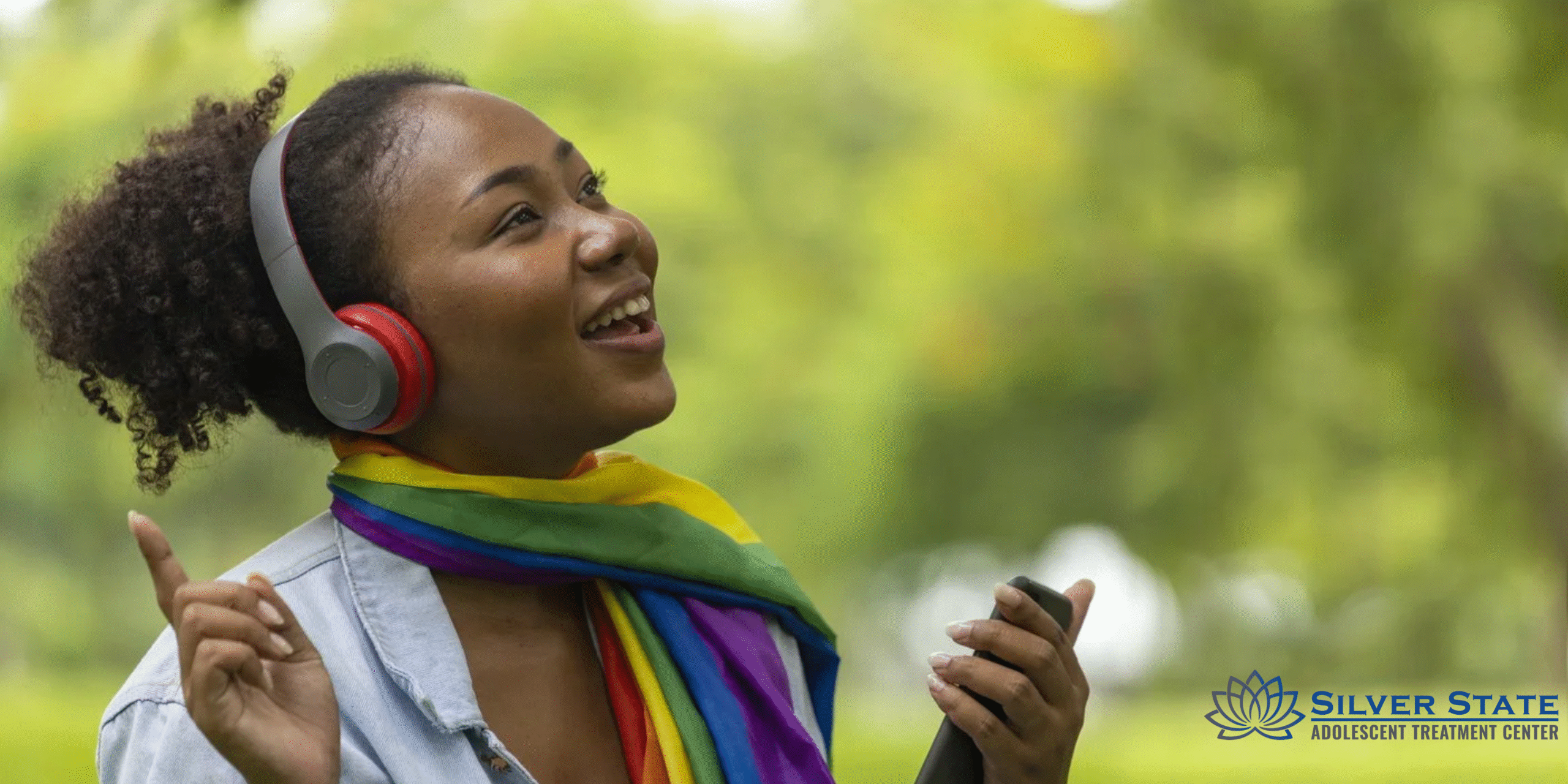Teen Drug Abuse: How Music Therapy Helps LGBTQ Youth Fight Fentanyl

Table of Contents
Key Takeaways
- Music therapy provides a safe, expressive outlet for LGBTQ youth battling fentanyl addiction.
- Music connects with emotions and offers relief where words often fall short.
- Structured music therapy helps reduce anxiety, depression, and cravings.
- Creative spaces allow youth to explore identity while healing in a supportive environment.
- Therapists trained in trauma and LGBTQ issues promote emotional safety and growth.
- Combining music therapy with comprehensive rehab improves long-term recovery success in cases of teen drug abuse.
Introduction
When you’re young and fighting addiction, the world can feel incredibly loud and silent at the same time. For LGBTQ youth, this silence can be even more isolating, especially when facing something as dangerous as fentanyl. You may not know how to ask for help, or you might be afraid of being misunderstood.
That’s where music therapy is making a real difference. Music isn’t just sound. Its expression. It’s safety. It’s a place to go when words fail. And for many LGBTQ teens struggling with teen drug abuse, music becomes a bridge between pain and healing. With the right therapy and support, music helps them connect, release, and rebuild their identity stronger than ever.
Let’s explore how music therapy is helping change lives in ways that feel as real and personal as the songs themselves.

Why Is Music Therapy So Powerful for LGBTQ Youth?
There’s a reason why music often becomes a lifeline during tough times. Whether you’re feeling grief, confusion, or fear, music meets you where you are. For LGBTQ youth, especially those navigating teen drug abuse and identity struggles, this connection can be life-changing.
According to an NIH study on adolescent music therapy, music therapy has been shown to improve emotional regulation, self-expression, and social connection. That means less bottled-up pain and more room for healing.
Music lets youth:
- Share emotions without judgment
- Feel seen and heard through lyrics and rhythm.
- Build empathy and trust in group settings.
- Create meaning out of their story.
Addiction can silence people. Music gives that voice back.
How Does Music Therapy Help with Fentanyl Addiction?
Fentanyl is an incredibly potent opioid, and its effect on the brain can be severe. It interferes with decision-making, emotional control and can quickly lead to overdose. But music, as simple as it seems, can reach parts of the brain that other therapies might miss.
One PubMed study found that music therapy is effective in reducing cravings and improving mood in individuals recovering from substance use. It lowers cortisol levels (a stress hormone) and healthily boosts dopamine without the use of drugs.
In sessions, clients may:
- Write or improvise songs
- Play instruments or participate in rhythm exercises.
- Listen and reflect on lyrics that relate to their recovery journey.
- Use music to practice mindfulness and emotional release.
This isn’t just a feel-good tool; it’s science-backed support that helps young people stay grounded, focused, and calm throughout their healing while addressing teen drug abuse.
Why Does LGBTQ Identity Matter in Recovery?
For LGBTQ youth, addiction often isn’t just about substances; it’s about painful rejection, trauma, or years of not feeling safe to be themselves. When you add fentanyl or other opioids to the mix, it can become a dangerous way to escape that pain.
The importance of inclusive care cannot be overstated. A powerful thesis from Arizona State University highlights how music therapy that affirms queer identity can build safe spaces for LGBTQ youth. These spaces foster:
- Self-acceptance through creative expression
- Trauma processing in a nonverbal, non-triggering way
- Identity exploration in a supportive, nonjudgmental setting
Music therapy offers these young people something deeply needed: emotional safety with professionals who genuinely understand and care, especially those experiencing teen drug abuse.

What Makes Music Therapy Unique?
The focus isn’t just on treating addiction; it’s on healing the whole person. That includes gender identity, mental health, trauma, and future hope. Here’s what clients can expect from music therapy centers:
- Personalized therapy that integrates music with other healing modalities
- Compassionate staff trained in LGBTQ+ cultural competency
- Programs that address co-occurring mental health conditions
- Creative group sessions that build connection and self-expression
There’s also an emphasis on community in centers. Many teens feel alone in their struggle. Here, they’re reminded that they’re not broken—they’re human, and their journey through teen drug abuse is seen and supported.
Can Music Therapy Work Alongside Traditional Rehab?
Absolutely. It works best when paired with structured recovery support.
Teens dealing with fentanyl addiction need more than just detox. They need tools, coping strategies, and emotional stability. That’s why many programs combine music therapy with behavioral health services, medication (if required), peer support, and trauma-informed counseling.
Some LGBTQ youth also benefit from connecting with specialized programs like alcohol addiction rehab, especially if they’re battling multiple substances. The key is a plan that meets them exactly where they are.
One way to boost recovery from the inside out? Support physical healing through better nutrition. Check out this short video on The Best Foods for Addiction Recovery. Fueling the body supports the mind, and music heals the soul.
How Can Families and Communities Support This Process?
It’s hard watching someone you love go through addiction, especially when they’re young. But support doesn’t have to be perfect; it just needs to be present.
Here’s how families and communities can make a difference:
- Listen without rushing to fix
- Affirm their identity, especially if they identify as LGBTQ+.
- Encourage expressive outlets, such as music, journaling, or art.
- Get involved with their treatment plan.
- Celebrate small victories along the way.
Parents don’t need to understand everything. They just need to show up and believe in their child’s ability to heal.
Conclusion
No two recovery journeys are the same. But one thing is sure: music has the power to reach where words can’t. And for LGBTQ youth facing fentanyl addiction and teen drug abuse, that kind of connection can be the start of a new life.
Music therapy is more than a program; it’s a promise that healing doesn’t have to be silent or lonely. It can be loud, expressive, and full of heart.
Call 725-525-9897 to speak with someone at Silver State Adolescent Treatment. If your loved one is facing addiction, hope starts with the right kind of help, and that help is here.
FAQs
What is music therapy exactly?
Music therapy is a clinical approach that uses music to help clients manage emotional, psychological, and physical challenges, including issues related to teen drug abuse.
Is music therapy effective for fentanyl addiction?
Yes. Research shows that music therapy can reduce anxiety, lower cravings, and improve engagement in recovery.
Can LGBTQ teens access specialized programs?
Yes. Many programs offer trauma-informed, identity-affirming care tailored to LGBTQ youth.
How often are music therapy sessions held?
This depends on the program. Some offer daily group sessions, while others provide weekly one-on-one options.
Is music therapy used alone or with other treatments?
Music therapy is often combined with counseling, medication, or behavioral therapy for optimal results in addressing teen drug abuse.
Resources
- Music Therapy and Adolescent Wellbeing – National Institutes of Health (2019)
https://pmc.ncbi.nlm.nih.gov/articles/PMC6472527/ - Effectiveness of Music Therapy in Treating Substance Use Disorders – PubMed (2018)
https://pubmed.ncbi.nlm.nih.gov/29346657/ - Queer Youth & Music Therapy: Creating Safe Spaces – Arizona State University
https://keep.lib.asu.edu/items/136761

